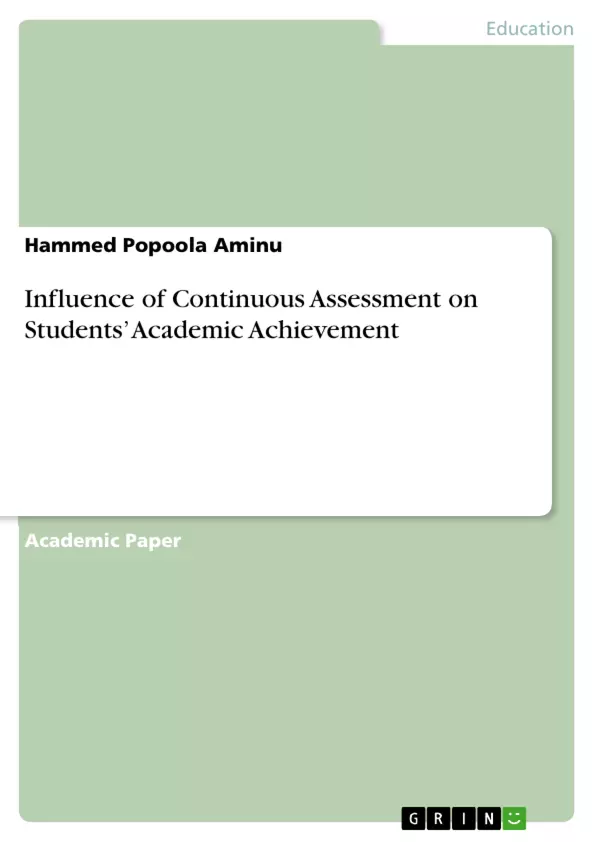This study investigated the influence of continuous assessment on academic achievement of students as expressed by secondary school teachers in Ilorin metropolis. The descriptive survey design was employed for the study and random sampling technique was used to select 120 teachers in ten different secondary schools in Ilorin metropolis. The instrument used was a self-designed questionnaire with test re-test reliability coefficient of 0.89. Data collected were analyzed using percentage, t-test and Analysis of Variance (ANOVA) statistics.
The findings of the study revealed that continuous assessment helps students to remember what has been learned, to concentrate effort on difficult areas of subject and helps identify their areas of strengths and weaknesses. It was also found that there was no significant difference in the teacher’s view of influence continuous assessment to students’ academic achievement based on gender and educational qualification.
Inhaltsverzeichnis (Table of Contents)
- Introduction
- Methodology
- Discussion
- Recommendations
Zielsetzung und Themenschwerpunkte (Objectives and Key Themes)
This study investigates the influence of continuous assessment on secondary school students' academic achievement, as perceived by teachers in Ilorin metropolis. It aims to assess the impact of continuous assessment on students' learning, understanding of key concepts, and overall academic performance.
- The role of continuous assessment in student learning and academic success
- The impact of continuous assessment on students' understanding of strengths and weaknesses
- Teacher perceptions of the effectiveness of continuous assessment in improving academic achievement
- The influence of gender and educational qualifications on teachers' views of continuous assessment
Zusammenfassung der Kapitel (Chapter Summaries)
- Introduction: This chapter provides an overview of the importance of assessment in education, particularly continuous assessment, and its role in providing feedback on learning outcomes and facilitating decision-making in the educational process. It explores the rationale for continuous assessment and its benefits, drawing upon existing research and frameworks.
- Methodology: This section details the research design and methodology employed in the study, outlining the sampling technique, data collection methods, and statistical analysis used to investigate the influence of continuous assessment on students' academic achievement. It describes the questionnaire used, its reliability, and the data analysis procedures.
Schlüsselwörter (Keywords)
The study focuses on the key concepts of continuous assessment, academic achievement, student performance, teacher perceptions, and the impact of gender and educational qualifications on these variables. It examines the relationship between continuous assessment practices and their influence on student success, particularly in the secondary school context.
- Quote paper
- Hammed Popoola Aminu (Author), 2020, Influence of Continuous Assessment on Students’ Academic Achievement, Munich, GRIN Verlag, https://www.grin.com/document/906266



